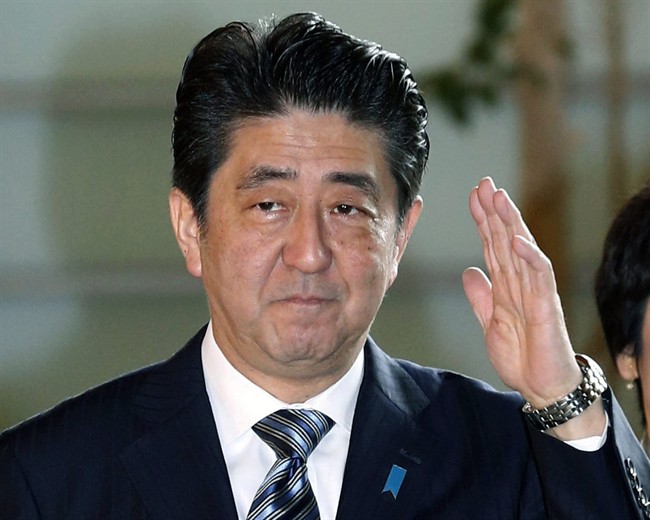TOKYO – Japan’s parliament re-elected Shinzo Abe on Wednesday to serve another term as prime minister after his party won a snap election earlier this month.

Abe won 328 votes out of the 470 cast by lawmakers in a special session of the lower house Wednesday. Since the ruling Liberal Democrats hold only two lower house seats, two other lawmakers also cast votes for Abe.
Following a similar vote by the upper house, Abe will name his cabinet, replacing only his defence minister. The cabinet members are then to be presented in a formal ceremony to Emperor Akihito at the Imperial Palace.
The victory by the ruling Liberal Democrats and their coalition partner the Komei Party was viewed as an endorsement by the public of Abe’s strategies for reviving Japan’s stagnant economy, despite a record low turnout.
Former Defence Minister Akinori Eto was among cabinet ministers appointed in a reshuffle in early September. He was one of several ministers whose political funding reports were questioned by opposition lawmakers during the recent parliamentary session. Two resigned their cabinet posts but were re-elected anyway.
The questions over political finance pulled Abe’s popularity ratings lower and were likely a factor in his decision to call the snap election.
Analysts said Eto’s handling of the questions was seen as too weak, and that Abe planned to appoint a stronger figure to help handle anticipated fierce questioning over defence-related issues in the next year’s parliamentary debate.
Local media said Gen Nakatani was viewed as the likely replacement for Eto. Nakatani served as defence minister under former Prime Minister Junichiro Koizumi and supports a stronger role for Japan’s military, which is constrained by the country’s commitment to pacifism under the constitution drafted by the American occupation forces following Japan’s defeat in World War II.
Abe favours revising the constitution as part of his effort to fortify Japan’s military.
Despite a record low turnout, the election’s outcome was seen as a public endorsement of Abe’s policies. But it also raises expectations for him to more aggressively tackle politically tough reforms for reviving the economy, two years after he first took office.
The economy fell into recession last year following a sales tax hike in April to 8 per cent from 5 per cent, prompting Abe to put off until 2017 a tax hike planned for October 2015.
Meanwhile, the central bank has stepped up its purchases of assets, pumping up to 80 trillion yen ($663 billion) a year into the economy to help drive prices higher and spur faster growth. A recent decision to shift more public pension money into stock investments is driving share prices higher.
Since Abe must call the next election by December 2018, he could have another four years to deliver on pledges to open markets and streamline regulations that have hindered Japan’s competitiveness. So far, Japan’s powerful bureaucracy and its rural and commercial sectors have resisted major changes, foiling earlier reform efforts.
But perhaps the biggest challenge is in getting private industry to significantly raise wages while they are still struggling to contain costs to compete with other big export economies. The meagre increases in the past two years have not kept pace with inflation, hobbling a recovery in consumer demand needed to put growth on a sustainable path.
Such “structural problems, namely labour shortages and corporations shifting production overseas, have become more evident and offset the policy effects that Prime Minister Abe has pursued since he took office in late 2012,” IHS economist Harumi Taguchi said in a recent research note.
“Although the government has pledged to accelerate structural reforms, it will take some time to see the effects contribute to growth,” it said.



Comments